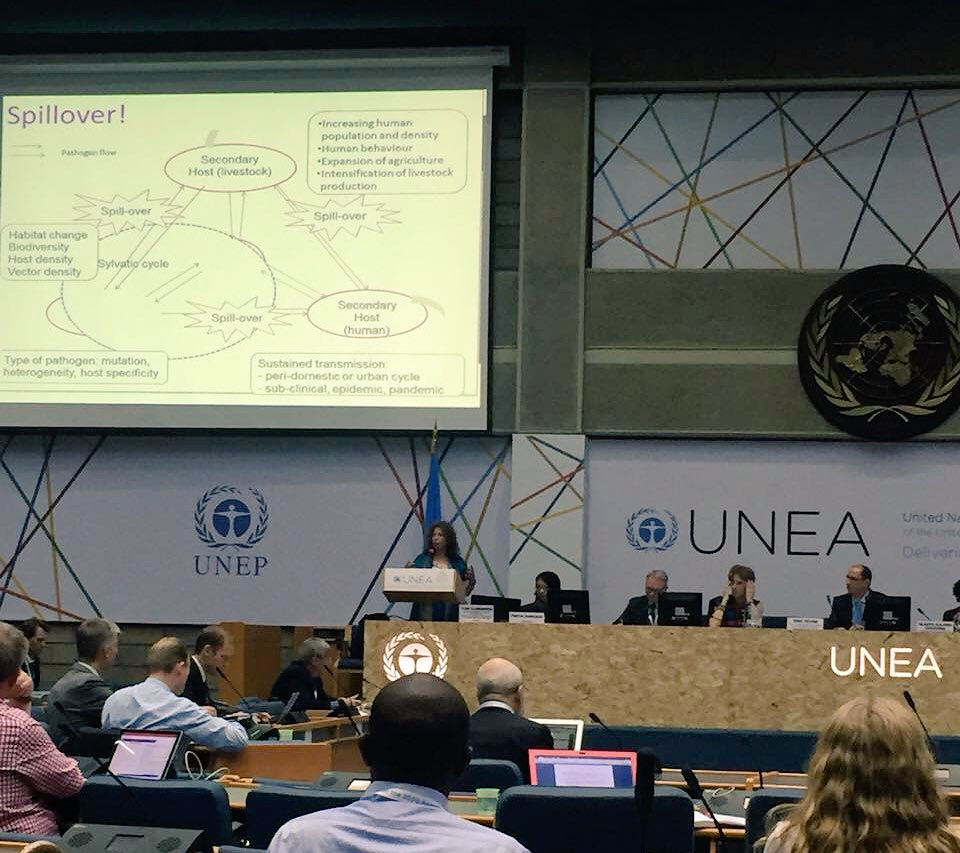
Meet the United Nations Environment Assembly

The United Nations Environment Assembly (UNEA) is the main governing body of the United Nations Environment Programme (UNEP). UNEP was established in 1972 at the conclusion of the Stockholm Conference on the Human Environment, in response to human effect on the environment based on scientific research at the time.
The original Governing Body of UNEP comprised 54 members that elected for three-year terms. Their mandate was broad and unspecific, and it focused less on deliberate action than on reviewing emerging scientific information, national environmental programs and the world environment situation. Their work culminated in an annual report to the General Assembly. The Stockholm Conference also recommended that a small secretariat be established to the Executive Director of UNEP and help carry out UN environment programs worldwide.
UNEP got to work quickly, and within its first decade passed a convention on the trade of endangered species, and adopted a plan for coastal zone management in the Mediterranean, and a convention protecting more than 120 migratory species. In 1987, UNEP was instrumental in passing the Montreal Protocol, which was the first international agreement aimed at reducing the use and manufacture of ozone-reducing chemicals. This was followed in 1988 by the formation of the Intergovernmental Panel on Climate Change (IPCC) at the urging of UNEP and the World Meteorological Organization. The IPCC was instrumental in passing the 1997 Kyoto Protocol, the landmark international agreement on global warming. In 1992, the UN Conference on Environment and Development adopted the Rio Declaration on Environment and Development and Agenda 21, both significant international agreements on the importance of sustainable, environment-friendly development.
By 2000, the work of protecting the environment had become a central tenet of the United Nations, enshrined in Goal 7 the Millennium Development Goals: Ensure Environmental Sustainability. In 2001, with the adoption of the Stockholm Convention, Member States made commitments to limit the use of chemicals that persist for long periods of time in the environment. In 2008, UNEP announced that it would become a climate-neutral branch of the United Nations and launched a Global Green New Deal to help focus the global economy on clean technologies.
Forty years after the formation of UNEP, United Nations Member States gathered at the 2012 United Nations Conference on Sustainable Development (Rio+20), and decided to strengthen and reorganize UNEP and expand access to its governing body to all UN Members. Recognizing the significant work of UNEP over its first 40 years, and with a newly expanded mandate, the governing body of UNEP decided to change its name to the United Nations Environment Assembly and set its first session of the UNEA in 2014. The new UNEA would meet biennially in Nairobi, Kenya.
By the time the UNEA held its first meeting in 2014, reports showed that the Montreal Protocol and UNEP’s work had begun to show some signs of recovery of the ozone layer. It was an optimistic sign that human action could correct human damage to the environment. In 2015, the United Nations adopted the new Sustainable Development Goals (SDGs). Several of the SDGs focus, at least partly, on the environment:
- GOAL 6: Clean Water and Sanitation
- GOAL 7: Affordable and Clean Energy
- GOAL 11: Sustainable Cities and Communities
- GOAL 13: Climate Action
- GOAL 14: Life Below Water
- GOAL 15: Life on Land
The most significant climate agreement to date, the Paris Agreement, came about as a result of the United Nations Climate Change Conference COP21, held in 2015. The second UNEA meeting, in May of 2016, brought together more than 2500 participants including heads of state, heads of UN organizations, representatives from the private sector and more than 170 environment ministers from different countries. Over the course of a week, the UNEA approved 25 resolutions and discussed how the international community could best meet the 2030 agenda. The most recent meeting, UNEA-3, took place from 4-6 December 2017, and brought together more than 4300 delegates from more than 170 Member States to address the theme of a pollution-free planet. During this meeting, the UNEA adopted 11 resolutions, including a political declaration on pollution by consensus.
Today the UNEA helps construct the global environmental agenda and works with other UN agencies and non-governmental environmental organizations to enact it. The UNEA uses its own unique rules of procedure and is led by the UNEA Bureau and the President of the UNEA, currently Dr. Edgar E. Gutiérrez-Espeleta, Minister of Environment and Energy for Costa Rica. The UNEA and UNEP are among the most active and engaged of UN agencies and their work is recognized worldwide. The UNEA will meet next at UNEA-4 from 11-15 March 2019 in Nairobi, Kenya, while in the meantime UNEP continues to do its part to help create a better, safer global environment for all people.
To keep up-to-date on all news UNEP follow them on Twitter at @UNEP or on Facebook.
Keep Up With The Accords
More to read
The AMUN Accords is a premier resource for fact-based Model United Nations simulations. We are always looking for new contributors. Want to write for the AMUN Accords? Check out out the submission guidelines and then get in touch!




